In Vitro Fertilization (IVF)
Advanced Fertility Solutions & Genetic Screening
In Vitro Fertilization (IVF)
Advanced Fertility Solutions & Genetic Screening
IVF offers hope for couples facing infertility. Learn about the diagnosis, advanced techniques like ICSI and PGT, and the step-by-step treatment process.
Overview and definition
In Vitro Fertilization (IVF) is the most effective form of assisted reproductive technology (ART). It is a complex series of procedures used to help with fertility or prevent genetic problems and assist with the conception of a child. The term “in vitro” is Latin for “in glass,” referring to the biological process of fertilization happening in a laboratory dish rather than inside the human body.
What is IVF?

IVF involves a controlled medical process where mature eggs are collected (retrieved) from the ovaries and fertilized by sperm in a laboratory. The fertilized egg (embryo) or eggs (embryos) are then transferred to a uterus. One complete cycle of IVF takes about three weeks. Sometimes these steps are split into multiple parts, which can make the process take longer.
The Biological Basis of Conception

To understand IVF, one must realize natural conception. Naturally, an egg is released from the ovary (ovulation) and travels down the fallopian tube. For pregnancy to occur, a sperm must travel up to the fallopian tube, penetrate the egg, and fertilize it. The fertilized egg then moves down to the uterus and implants in the lining. IVF bypasses the fallopian tubes entirely, making it the ideal treatment for women with tubal damage, as well as for many other infertility causes.
The Biological Basis of Conception
To understand IVF, one must realize natural conception. Naturally, an egg is released from the ovary (ovulation) and travels down the fallopian tube. For pregnancy to occur, a sperm must travel up to the fallopian tube, penetrate the egg, and fertilize it. The fertilized egg then moves down to the uterus and implants in the lining. IVF bypasses the fallopian tubes entirely, making it the ideal treatment for women with tubal damage, as well as for many other infertility causes.
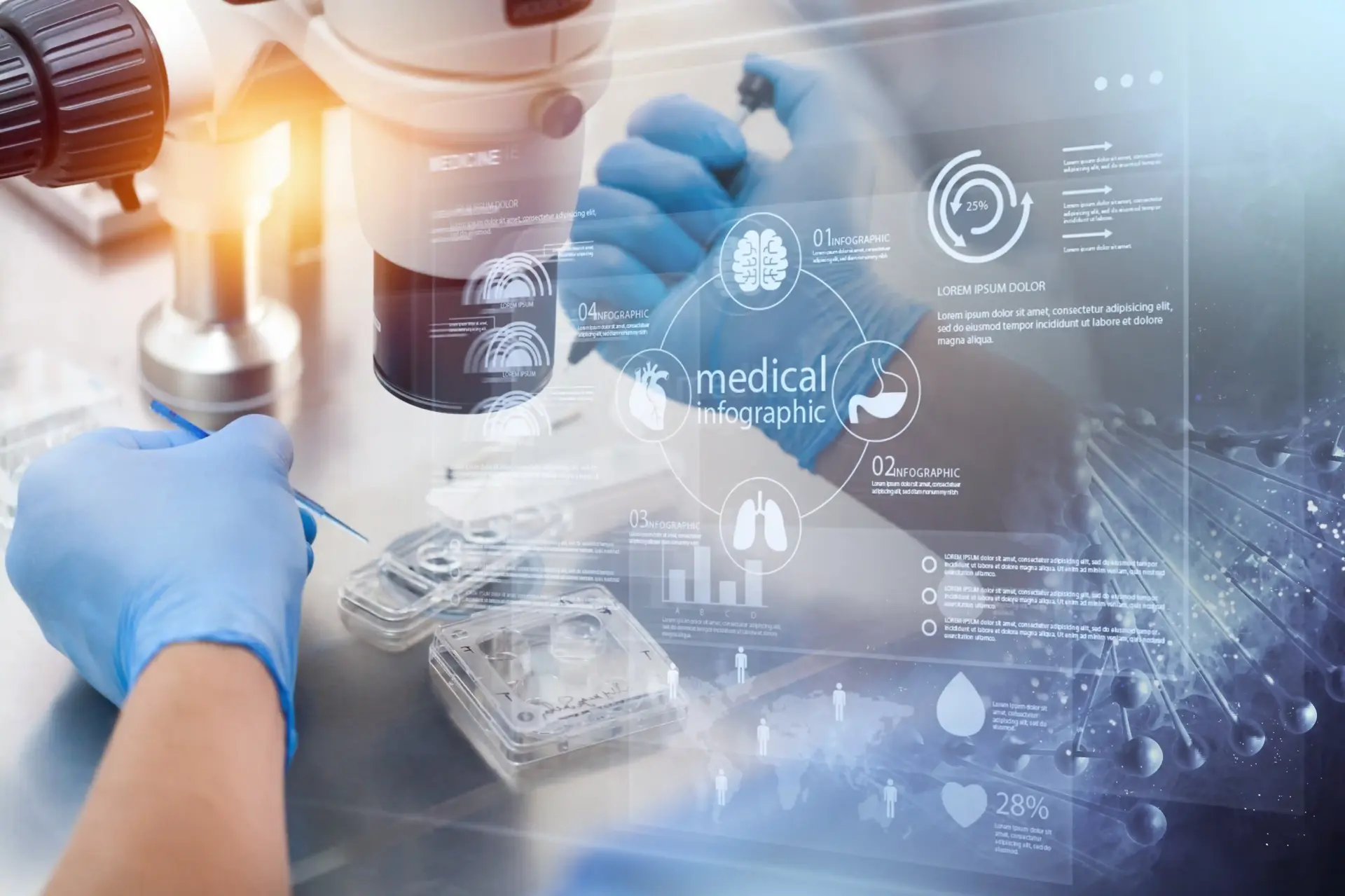
Scope of IVF Treatment
IVF is not just a single procedure but a platform for various advanced reproductive techniques. It addresses a wide spectrum of fertility challenges:
- Standard IVF: Sperm and eggs are mixed in a dish, allowing natural fertilization to occur.
- Intracytoplasmic Sperm Injection (ICSI): A single healthy sperm is injected directly into a mature egg. This is used primarily for male factor infertility.
- Preimplantation Genetic Testing (PGT): Embryos are tested for genetic abnormalities before transfer, ensuring only healthy embryos are used.
- Fertility Preservation: Freezing eggs (oocytes) or sperm for future use, often done before cancer treatment or for social reasons.
- Third-Party Reproduction: The use of donor eggs, donor sperm, or gestational carriers (surrogates) for individuals who cannot use their own gametes or carry a pregnancy.
30
Years of
Excellence
Trusted Worldwide
Book a Free Certified Online
Doctor Consultation
- Overview and Definition
- Causes and Evaluation
- Procedure Steps
- Treatment and Care
- Follow-up and Support
Table of Contents
We're Here to Help.
Get in Touch.
Send us all your questions or requests, and our expert team will assist you.

Symptoms and Causes
Infertility is defined as the inability to conceive after one year of regular, unprotected intercourse (or six months if the woman is over 35). While infertility itself is the primary condition, it is often a symptom of an underlying medical issue. Understanding these causes is the first step toward selecting the right treatment.
Recognizing the Signs of Infertility
Unlike other medical conditions, infertility often presents with no obvious physical symptoms other than the inability to get pregnant. However, sure signs can point to specific underlying problems:
- Irregular Menstrual Cycles: Periods that are very irregular, absent (amenorrhea), or unusually heavy can indicate ovulation disorders like Polycystic Ovary Syndrome (PCOS).
- Painful Periods (Dysmenorrhea): Severe pelvic pain, cramping, or lower back pain during menstruation may be a sign of endometriosis or fibroids.
- Pain During Intercourse (Dyspareunia): Deep pain during sex is a classic symptom of endometriosis or pelvic inflammatory disease.
- Hormonal Changes: Symptoms like sudden weight gain, severe acne, thinning hair, or facial hair growth in women often suggest hormonal imbalances.
- Male Factor Symptoms: Issues with sexual function (erectile dysfunction), pain or swelling in the testicles, or a history of testicular/prostate surgery can indicate male fertility issues.
Underlying Causes of Infertility
Infertility is complex and can stem from female factors, male factors, or a combination of both.
Female Infertility Factors:
- Tubal Factor: Blocked or damaged fallopian tubes prevent the sperm from meeting the egg. This is often caused by pelvic inflammatory disease (PID) or previous surgeries.
- Ovulation Disorders: Hormonal issues prevent the release of an egg. PCOS is the most common cause, but thyroid issues and premature ovarian failure also play a role.
- Endometriosis: A condition where tissue similar to the uterine lining grows outside the uterus, causing inflammation and scarring that can block tubes and affect egg quality.
- Uterine or Cervical Causes: Uterine fibroids, polyps, or congenital anomalies (like a septate uterus) can interfere with embryo implantation.
- Age-Related Infertility: A woman’s egg quality and quantity (ovarian reserve) naturally decline with age, particularly after 35.

Male Infertility Factors:
- Low Sperm Production (Oligospermia): A low count reduces the chance of fertilization.
- Poor Sperm Motility (Asthenospermia): Sperm cannot swim effectively to reach the egg.
- Abnormal Sperm Morphology (Teratospermia): Sperm have abnormal shapes, preventing them from penetrating the egg.
- Blockages: Obstructions in the testicles or tubes that carry sperm.
Unexplained Infertility: In about 15-30% of couples, standard tests cannot identify a specific cause. IVF is often highly successful in these cases as it bypasses many potential biological barriers.
Diagnosis and Staging
The path to IVF begins with a rigorous diagnostic phase. In the context of fertility, “staging” refers to assessing the severity of the fertility challenge and the quality of the ovarian reserve. At Liv Hospital, we utilize a personalized diagnostic roadmap to determine the most effective protocol for each couple.
The Diagnostic Roadmap
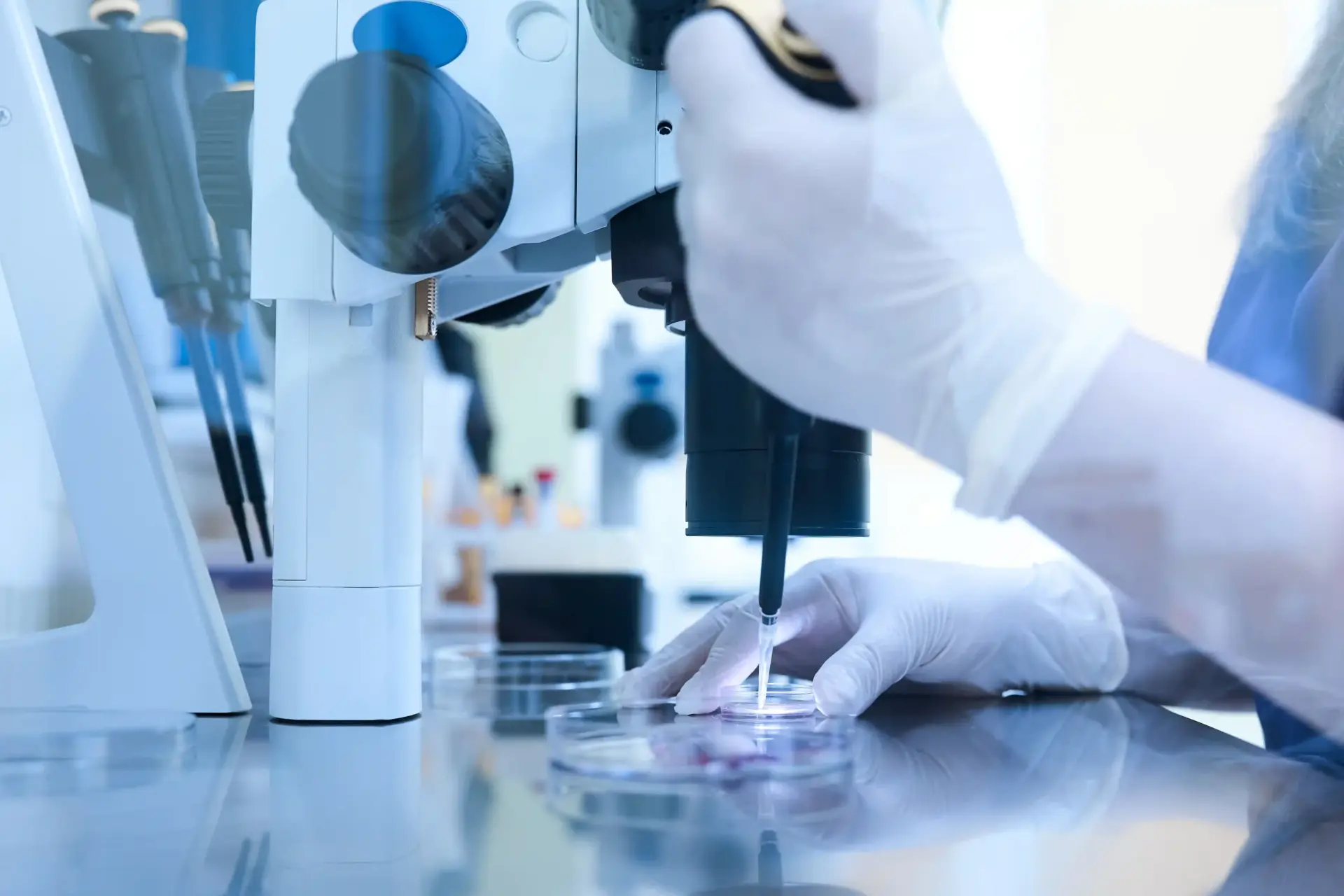
The evaluation is comprehensive, checking the three main requirements for conception: healthy eggs, healthy sperm, and a receptive uterus.
- Ovarian Reserve Testing:
- AMH (Anti-Mullerian Hormone): A blood test that provides a reliable estimate of the remaining egg supply.
- Day 3 FSH and Estradiol: Hormone tests taken on the third day of the menstrual cycle to assess ovarian function.
- Antral Follicle Count (AFC): A transvaginal ultrasound to visually count the number of resting follicles in the ovaries.
- Semen Analysis: The most critical test for the male partner. It evaluates the volume, count, motility (movement), and morphology (shape) of the sperm.
- Uterine and Tubal Evaluation:
- Hysterosalpingography (HSG): An X-ray procedure using dye to check if the fallopian tubes are open and the uterine cavity is normal.
- Saline Infusion Sonohysterography (SIS): A saline ultrasound to detect polyps or fibroids inside the uterus.
- Hysteroscopy: A thin, lighted tube is inserted into the vagina to examine the cervix and inside of the uterus. This is considered the gold standard for diagnosing uterine pathologies.
"Staging" Embryo Quality
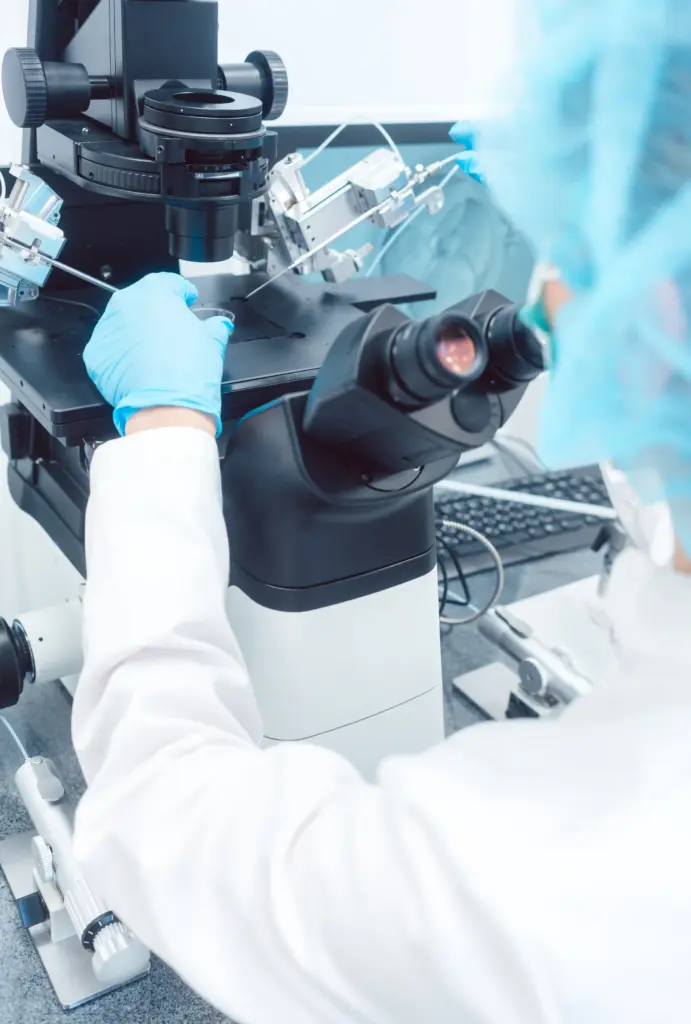
In IVF, success depends heavily on the quality of the embryos. Embryologists “grade” or stage embryos to select the best one for transfer.
- Cleavage Stage (Day 3): Embryos are graded based on the number of cells (usually 6-8) and their symmetry.
- Blastocyst Stage (Day 5): This is a more advanced stage. Embryos are graded on three factors:
- Expansion: How much the embryo has grown.
- Inner Cell Mass (ICM): The cluster of cells that will become the baby.
- Trophectoderm: The outer layer of cells that will become the placenta.
- Note: Transferring blastocysts (Day 5) generally yields higher success rates than Cleavage (Day 3) transfers because only the strongest embryos survive to this stage.
Treatment Details
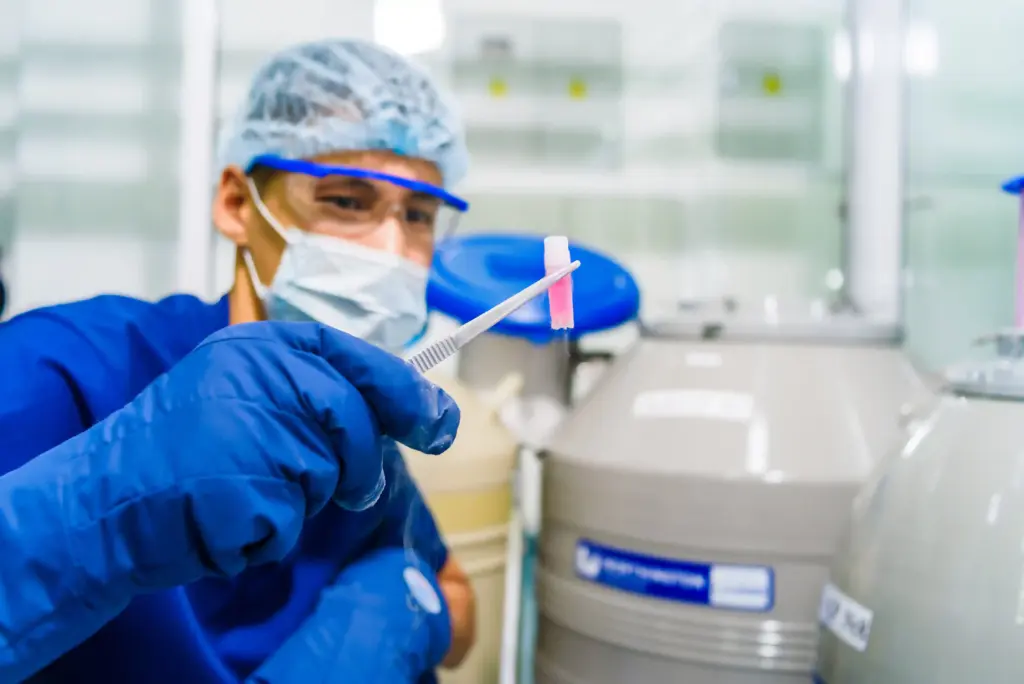
IVF treatment is a synchronized medical process that requires precision and timing. At Liv Hospital, we tailor the “protocol” (the combination and dosage of medications) to the patient’s specific body and diagnosis. The goal is to maximize the number of quality eggs while ensuring the patient’s safety.
Step 1: Ovarian Stimulation
In a natural cycle, only one egg matures. In IVF, we need multiple eggs to increase the chances of success.
- Medication: Patients self-administer daily hormone injections (Gonadotropins) for 8-12 days.
- Monitoring: Frequent ultrasounds and blood tests track follicle growth (fluid-filled sacs containing eggs) and hormone levels to prevent Ovarian Hyperstimulation Syndrome (OHSS).
- The “Trigger Shot”: When follicles reach the optimal size, a final injection (hCG or GnRH agonist) is given to mature the eggs. Egg retrieval is scheduled exactly 34-36 hours later.
Step 2: Egg Retrieval (OPU)
This is a minor surgical procedure performed under light sedation (anesthesia).
- The Procedure: Using ultrasound guidance, a thin needle is passed through the vaginal wall into the ovaries to suction the fluid from the follicles. The fluid is immediately sent to the embryologist for egg identification.
- Recovery: The procedure takes about 20 minutes. Patients usually go home the same day after a short rest.
Step 3: Fertilization and Embryo Culture
This is where the science of the laboratory takes over.
- Insemination: In standard IVF, sperm are placed in the dish with the eggs.
- ICSI (Intracytoplasmic Sperm Injection): For most cases, especially male factor infertility, our embryologists use a micromanipulator to inject a single sperm directly into each mature egg.
- Culture: The fertilized eggs (now embryos) are kept in incubators that mimic the environment of the fallopian tubes. They are monitored for 3 to 5 days.
Step 4: Embryo Transfer
The final step is placing the embryo into the uterus.
- The Procedure: This is a simple, painless procedure usually done without anesthesia. The doctor inserts a soft catheter through the cervix and places the embryo(s) into the optimal position within the uterus.
- Luteal Support: After transfer, the patient takes progesterone medication to thicken the uterine lining and support a potential pregnancy.
- The Wait: A pregnancy test (Beta hCG blood test) is performed 10-12 days after the transfer.
Advanced Add-On Therapies
- PGT-A (Preimplantation Genetic Testing for Aneuploidies): Biopsying the embryo to screen for chromosomal abnormalities (like Down Syndrome) before transfer. This significantly reduces miscarriage rates.
- Assisted Hatching: Using a laser to thin the outer shell of the embryo to help it “hatch” and implant.
- Frozen Embryo Transfer (FET): Freezing embryos allows the woman’s body to recover from stimulation medications before transfer, often resulting in higher success rates than with fresh transfers.
The Medical Center
IVF is a partnership between the clinical team (doctors/nurses) and the laboratory team (embryologists). Success relies as much on the lab’s air quality as on the surgeon’s skill. Liv Hospital’s IVF Center is designed to optimize every variable that contributes to a healthy pregnancy, offering a sanctuary of hope supported by world-class science.
Why Choose Liv Hospital for IVF?
We operate on the principle that every couple’s fertility journey is unique. We do not use “cookie-cutter” protocols.
- High-Success Laboratory: Our embryology lab is the heart of our center. It is equipped with state-of-the-art filtration systems to remove volatile organic compounds (VOCs), ensuring a pristine environment for embryo growth. We use Time-Lapse Incubators (EmbryoScope) to continuously monitor embryo development without removing them from the safe incubator environment.
- Challenging Cases Expert: We specialize in “poor responders” and patients with repeated IVF failures. Our team employs advanced protocols (like PRP ovarian rejuvenation or co-culture) to help patients who have been told they have little hope.
Patient-Centered Excellence
At Liv Hospital, we believe in transparency and education.
- Personalized Care Coordinators: Every patient is assigned a coordinator who manages their injection schedule and appointments and answers questions in real time.
- Global Standards: We adhere to the strict guidelines of ESHRE (European Society of Human Reproduction and Embryology) and ASRM (American Society for Reproductive Medicine), ensuring that our success rates are reported honestly and our safety protocols are world-class.
From the first consultation to the first heartbeat, Liv Hospital is dedicated to making your dream of family a reality.
Would you like me to outline the next category for the website content?
Multidisciplinary Fertility Care
Infertility affects the whole person. Our center integrates care from various specialties:
- Andrology: Our urologists specialize in male fertility, offering Micro-TESE surgery for men with azoospermia (zero sperm count) to retrieve sperm directly from the testicular tissue.
- Genetics: Our in-house genetic counselors work with families carrying hereditary diseases to design PGT-M (Monogenic) probes, ensuring their children are born free of specific genetic disorders.
- Psychological Support: The emotional toll of IVF is significant. We offer dedicated counseling services to support couples through the highs and lows of treatment.
Patient-Centered Excellence
At Liv Hospital, we believe in transparency and education.
- Personalized Care Coordinators: Every patient is assigned a coordinator who manages their injection schedule and appointments and answers questions in real time.
- Global Standards: We adhere to the strict guidelines of ESHRE (European Society of Human Reproduction and Embryology) and ASRM (American Society for Reproductive Medicine), ensuring that our success rates are reported honestly and our safety protocols are world-class.
From the first consultation to the first heartbeat, Liv Hospital is dedicated to making your dream of family a reality.
Would you like me to outline the next category for the website content?
- Overview and Definition
- Causes and Evaluation
- Procedure Steps
- Treatment and Care
- Follow-up and Support
Book a Free Certified Online
Doctor Consultation

FREQUENTLY ASKED QUESTIONS
I am item content. Click edit button to change this text. Lorem ipsum dolor sit amet, consectetur adipiscing elit. Ut elit tellus, luctus nec ullamcorper mattis, pulvinar dapibus leo.
I am item content. Click edit button to change this text. Lorem ipsum dolor sit amet, consectetur adipiscing elit. Ut elit tellus, luctus nec ullamcorper mattis, pulvinar dapibus leo.
I am item content. Click edit button to change this text. Lorem ipsum dolor sit amet, consectetur adipiscing elit. Ut elit tellus, luctus nec ullamcorper mattis, pulvinar dapibus leo.
I am item content. Click edit button to change this text. Lorem ipsum dolor sit amet, consectetur adipiscing elit. Ut elit tellus, luctus nec ullamcorper mattis, pulvinar dapibus leo.
I am item content. Click edit button to change this text. Lorem ipsum dolor sit amet, consectetur adipiscing elit. Ut elit tellus, luctus nec ullamcorper mattis, pulvinar dapibus leo.

RELATED VIDEOS
Understanding Your Cancer Diagnosis: A Beginner's Guide
This video breaks down the basics of a cancer diagnosis, explaining common terms, what to expect, and questions to ask your doctor. A gentle introduction for newly diagnosed patients.
Navigating Treatment Side Effects: Tips for Comfort
Learn practical strategies and expert advice on managing common side effects like fatigue, nausea, and pain during cancer treatment. Find ways to improve your daily comfort and well-being.
Life Beyond Cancer: Thriving in Survivorship
Explore the journey of cancer survivorship, focusing on emotional recovery, long-term health, and embracing a fulfilling life after treatment. Hear inspiring stories and expert insights.
Blog
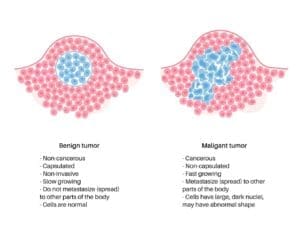
What Is the Difference Between Malignant and Benign Tumors?
Last Updated on November 14, 2025 by Ugurkan Demir At Liv Hospital, we know that getting a tumor diagnosis can be scary. But, not all

What Does a Cancer Tumor Look Like? Visual Differences Between Cancer Cells and Normal Cells Under a Microscope
Last Updated on November 14, 2025 by Ugurkan Demir Knowing how cancer cells look under a microscope is key for accurate diagnosis and treatment. At

Can a Benign Tumor Become Malignant? Understanding When Tumors Turn Cancerous
Last Updated on November 14, 2025 by Ugurkan Demir At Liv Hospital, we know that the thought of having a tumor can be scary. Not
